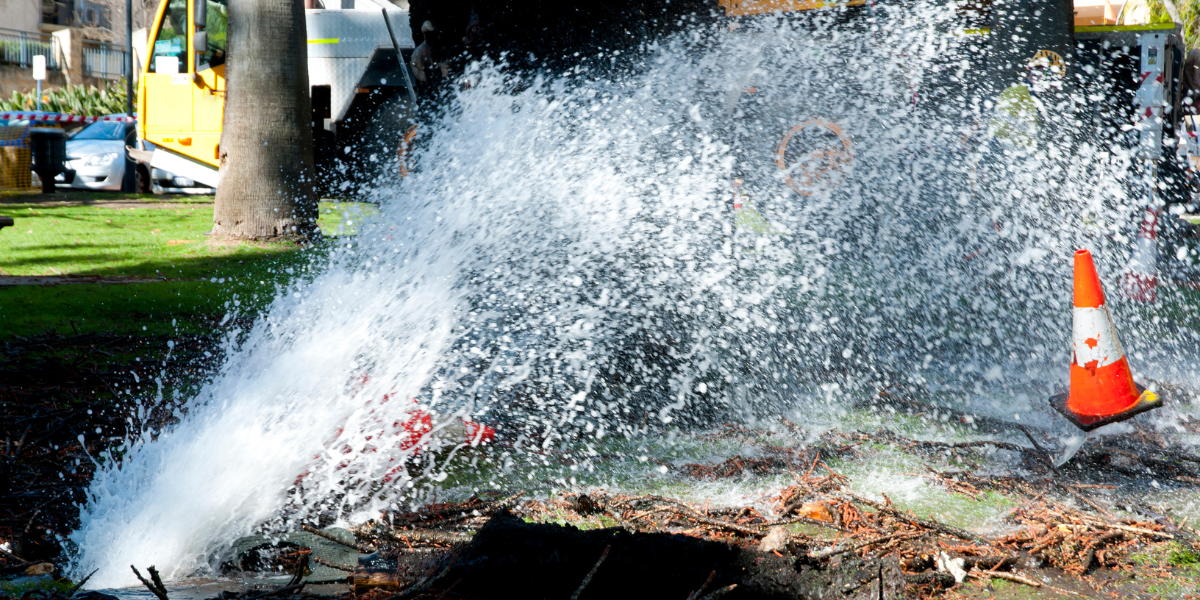
It is rare anyone is killed due to hitting a water line, but it does happen. While injuries are unusual, hitting water or sewer lines can cause very significant damage and the public impact can be very high. One great example of the damage and costs that occur when a water main is hit is an accident that took place here in Minnesota. Although this damage was years ago, the ripples (pardon the pun) this damage caused were huge as 14 million gallons (about 52995740 L) of water flooded a corridor of downtown Minneapolis. The hard costs and societal costs were staggering:
• Repair costs alone were estimated to be $325,000.
• Multiple vehicles within a nearby parking garage were submerged, including 30 postal trucks. Replacing only 20 of those trucks was estimated at over $500,000.
• Dozens of businesses were forced to close, forfeiting thousands in lost revenue, due to lack of water.
• The Federal Reserve Back was reduced to essential staff only; other employees were sent home with no pay.
• Over 20 businesses were required to have their water tested for bacterial infection and toxins like pesticides & metals.
• Traffic was a nightmare due to the flooded state of the streets and the frigid January temperatures.
According to Michael Grinnell, Senior Engineering Technician with Gewalt Hamilton Associates, “When you must shut water off in an emergency, and you are affecting daycares, schools, doctor’s offices, and residences with children and the elderly, the cost of the repair is not a factor compared to the impact you are having on these customers. Regardless of fault, the burden of the damage falls back on the utility.”
Robert Edwards, Water Operation Supervisor, Planning and Inspection with Citizen’s Energy Group, has a thought-provoking perspective: “I realize when a gas line is damaged there is the potential threat of a spark and explosion with fire, but when a water line is damaged, there is the threat of extreme property damage, flooding, possible drowning and bacteria and toxins entering the potable water lines and being consumed – resulting in sickness or death. It’s important to remember that water utility pipes are the only underground utility carrying a product people put into their bodies!”
“Water delivery systems are pressurized,” Edwards continues. “But when a damage occurs, in most cases the pipe is destroyed and the pressure is flowing in one direction forcing sand, rock, and other debris into the pipe. Not every water main is subject to bacteria and toxins, but there is a ‘threat’ if a water main is not shut down by a competent, trained utility representative.”
Less Bottom-Line Incentive
Without pressure to make a profit, it can be hard for a public utility to justify investing money in damage prevention to avoid future damages. Even if the contractor or locator is 100% at fault (and keep in mind, many times it is neither the locator nor the contractor’s fault), you never recover all the true costs. (Check out the Water & Sewer Repair Cost Checklist on page 10 or at ExcavationSafetyAlliance.com for a look at the costs you may not be considering.)
The good news is we are seeing more and more water & wastewater professionals participating in our monthly Excavation Safety Alliance virtual Town Halls and attending our Global Excavation Safety Conference. At the 2023 Global ESC in Tampa, our 18th Conference, we hosted water and sewer professionals from 12 different states. Their passion for damage prevention & excavation safety will help the ball keep rolling.

![ESM Sidebar Ad[87] ESM Sidebar Ad[87]](https://excavationsafetyalliance.com/hubfs/ESM%20Sidebar%20Ad%5B87%5D.gif)




Comments